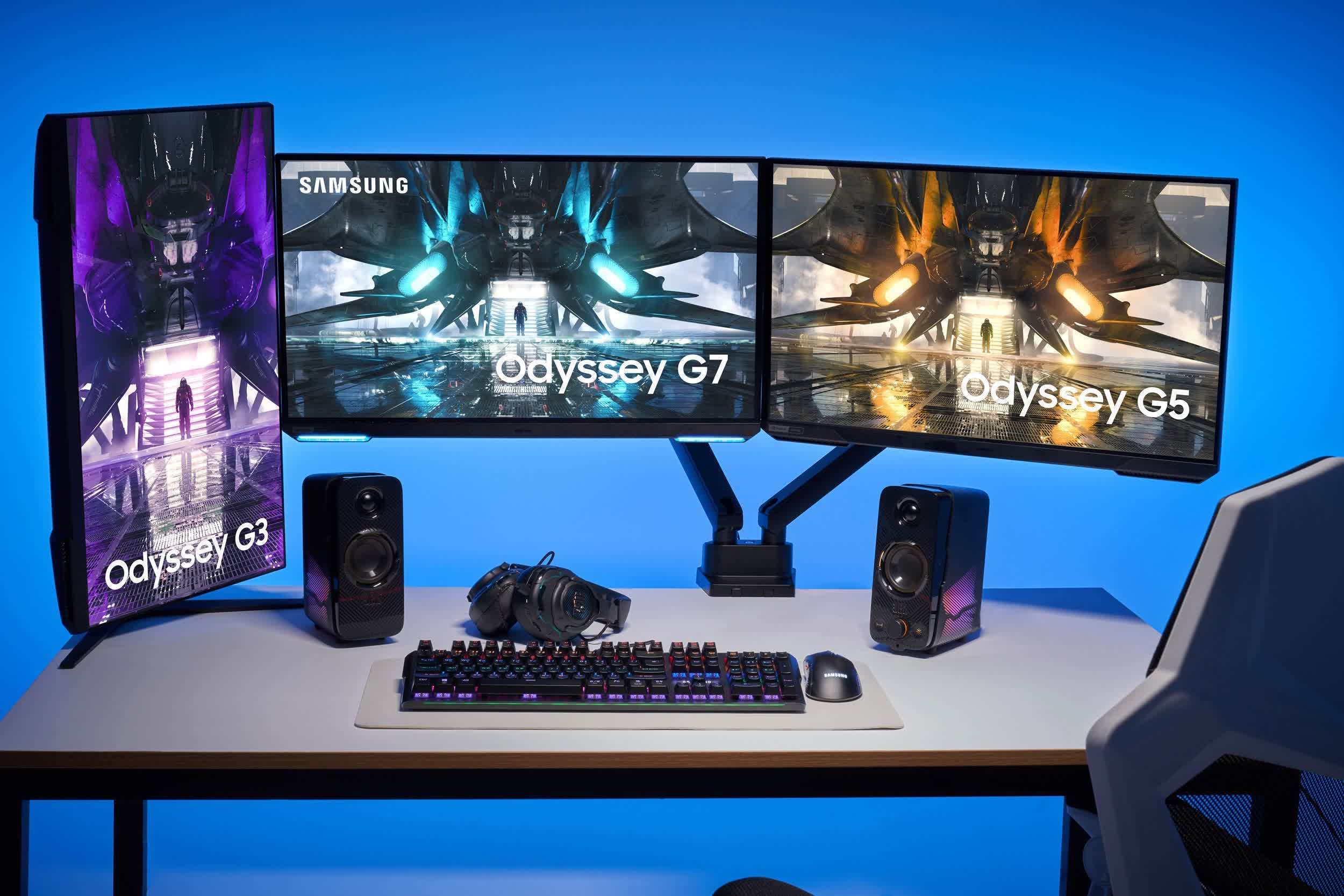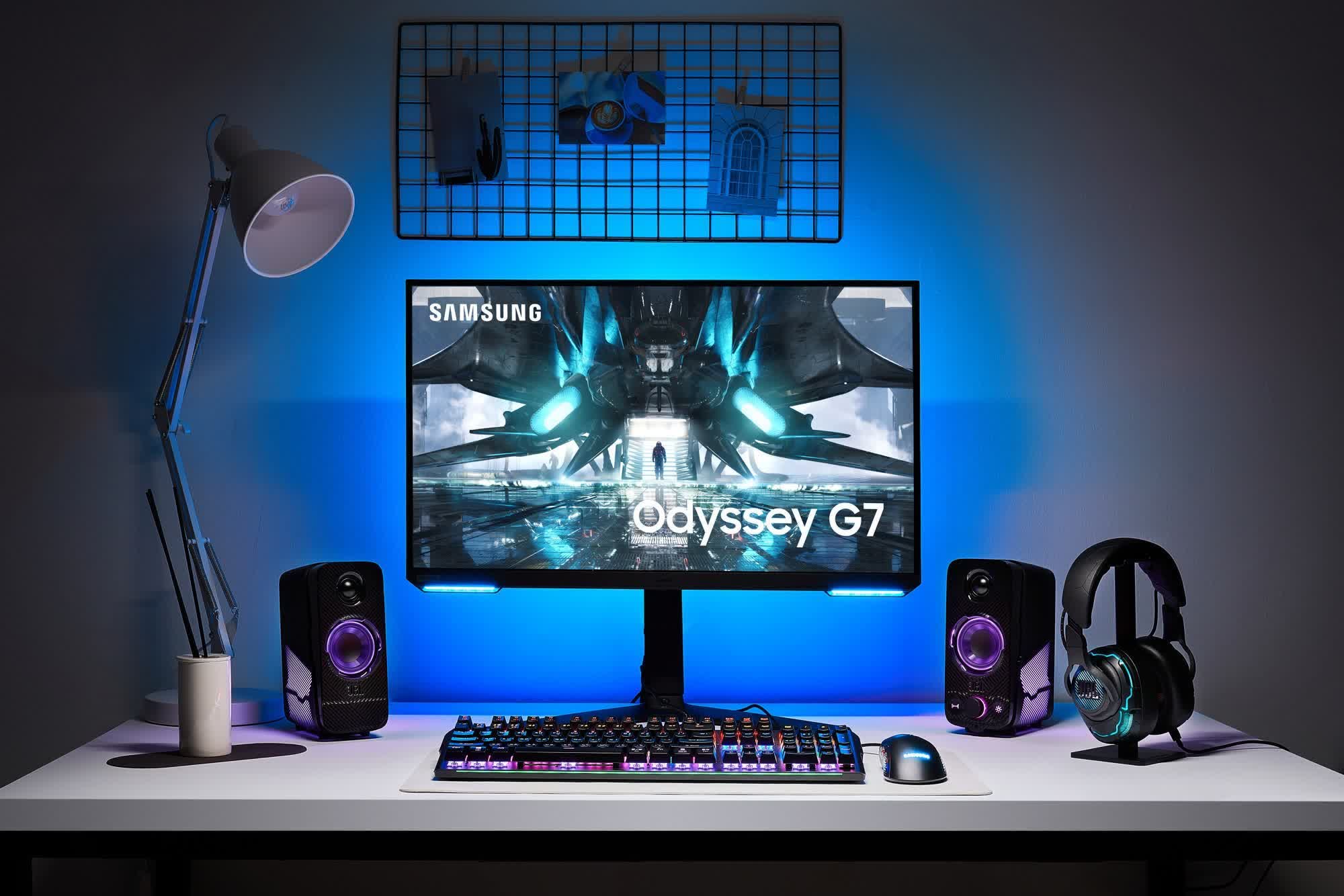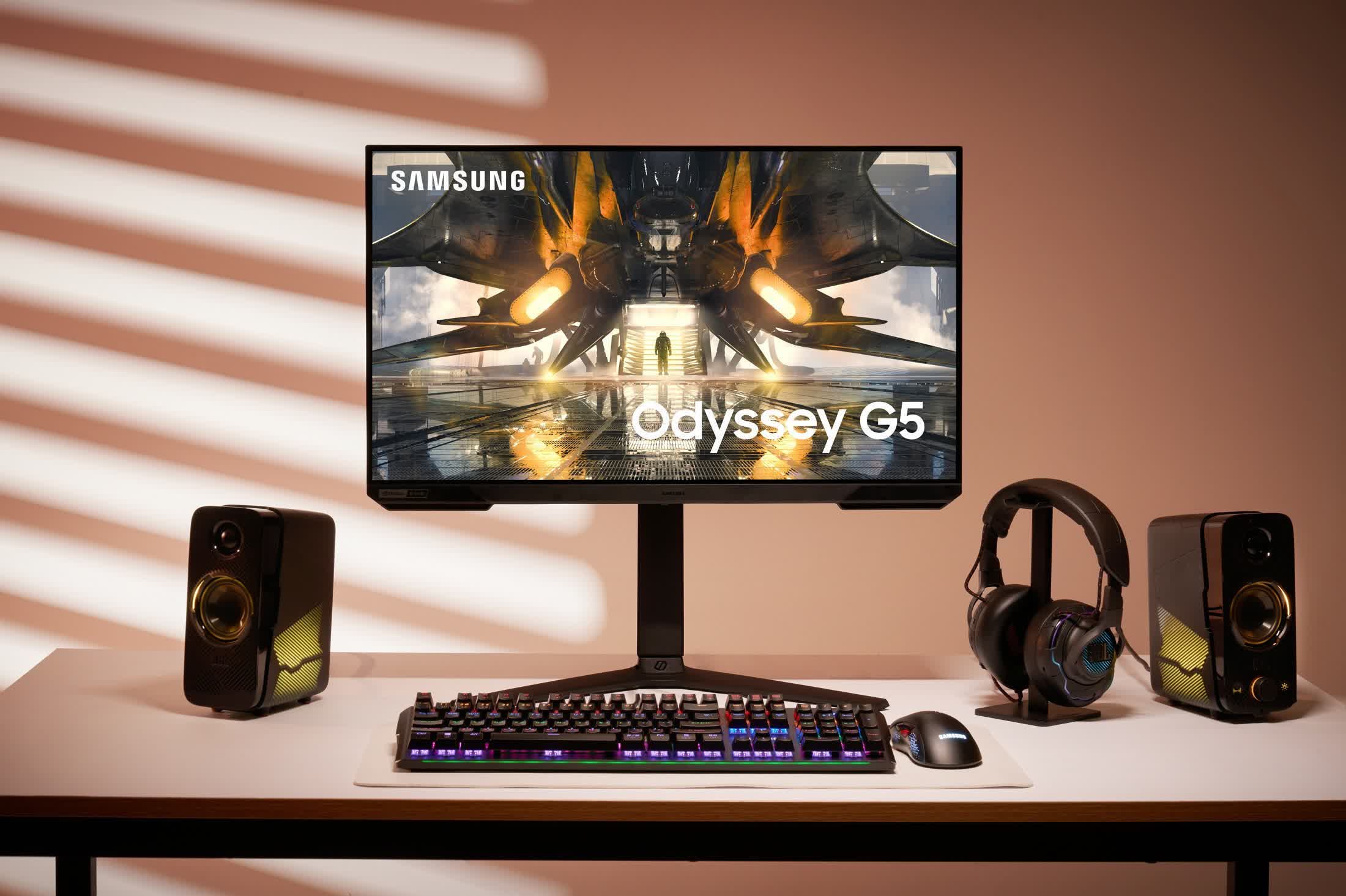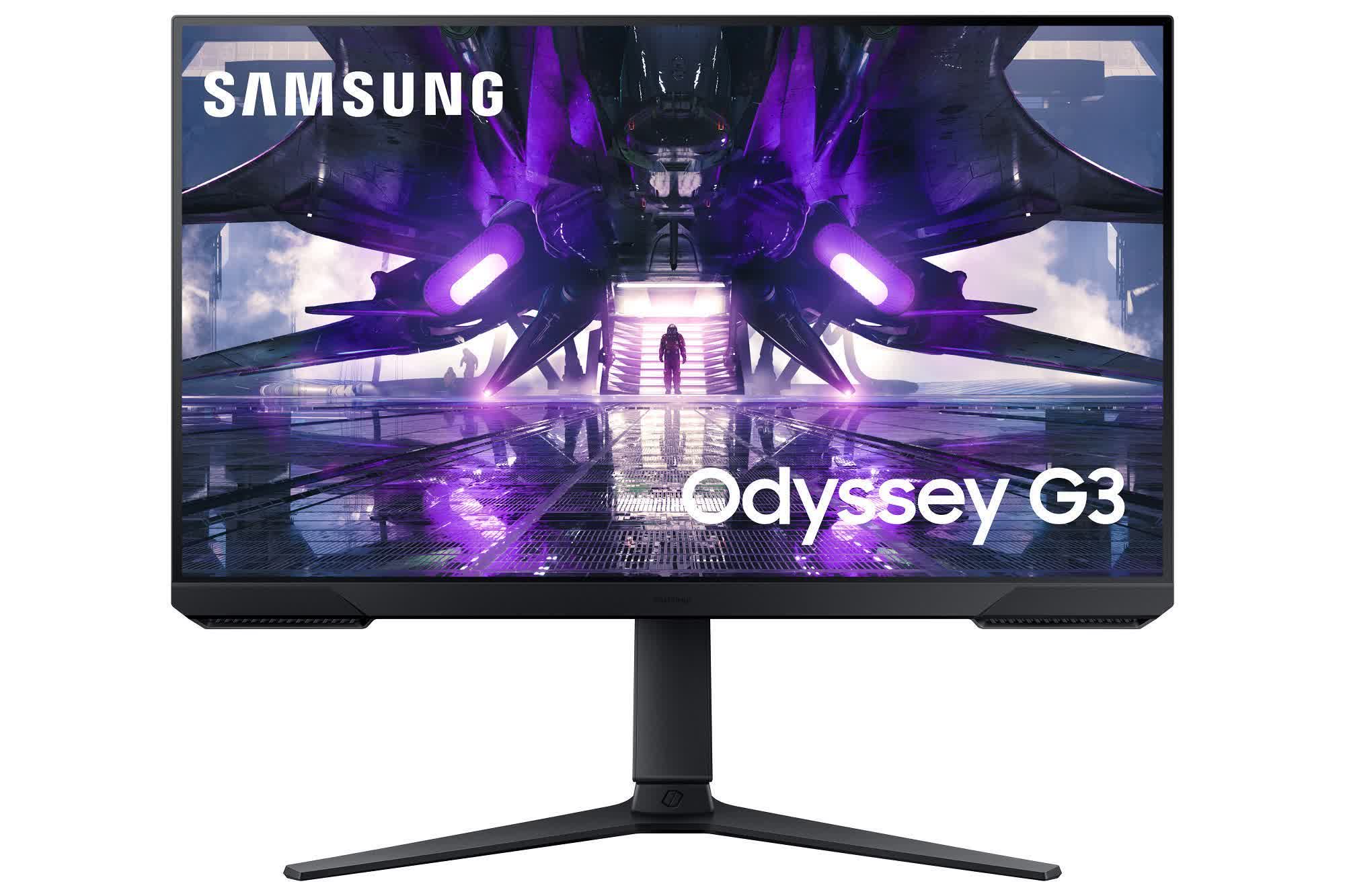What just happened? Samsung is adding to its impressive Odyssey gaming monitor lineup with four new models that feature high refresh rates, up to 4K resolutions, and FreeSync support. The flat panel displays range in size from 24 inches to 28 inches.

We’re big fans of Samsung’s Odyssey line, awarding the G7 32-inch our “Best 1440p gaming monitor @ 240Hz” award in this feature, and gave the 49-inch super-ultrawide Odyssey G9 a score of 90 in our review.
Joining the lineup is the Odyssey G7 28-inch (G70A). Unlike its G7 siblings, this monitor uses a 4K resolution with a 144Hz refresh rate. It’s also the only one of the four to feature AMD’s FreeSync Premium Pro, as opposed to FreeSync premium, though both versions are G-Sync compatible.

The G7 28-inch boasts a peak 400 nits brightness, earning it VESA DisplayHDR400 certification, and a 1ms GtG response time. Ports consist of DisplayPort 1.4, two USB 3.2 Gen 1 ports, and HDMI 2.1, making it an ideal option for XBSX/PS5 owners. It’s also the only one to come with Auto Source Switch+.
Next is the G5 27 inch (G50A). This is a 1440p@165Hz monitor with a 1ms GtG response time and HDR10, though the 350 nits peak brightness means it misses out on Vesa certification. It also comes with FreeSync Premium and has many of the G7’s features: Low Input Lag Mode, Super Arena Gaming UX, Ultrawide Game View, and CoreSync Lighting. The HDMI is downgraded to 2.0, and it uses DisplayPort 1.2.

Finally, there are the two G3 models. The only difference between the 27-inch and 24-inch versions appears to be the size. Both have 1080p resolutions, 250 nits brightness, and 144Hz refresh rates with a 1ms (MPRT) response rate and AMD FreeSync Premium.

All three monitors come with 100 x 100 VESA mounts and height-adjustable stands with pivot, swivel, and tilt.
Samsung has yet to announce any prices or availability for the new Odyssey monitors.
https://www.techspot.com/news/90129-samsung-adds-four-new-high-refresh-monitors-odyssey.html